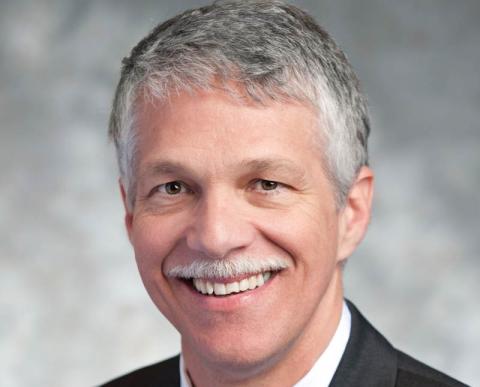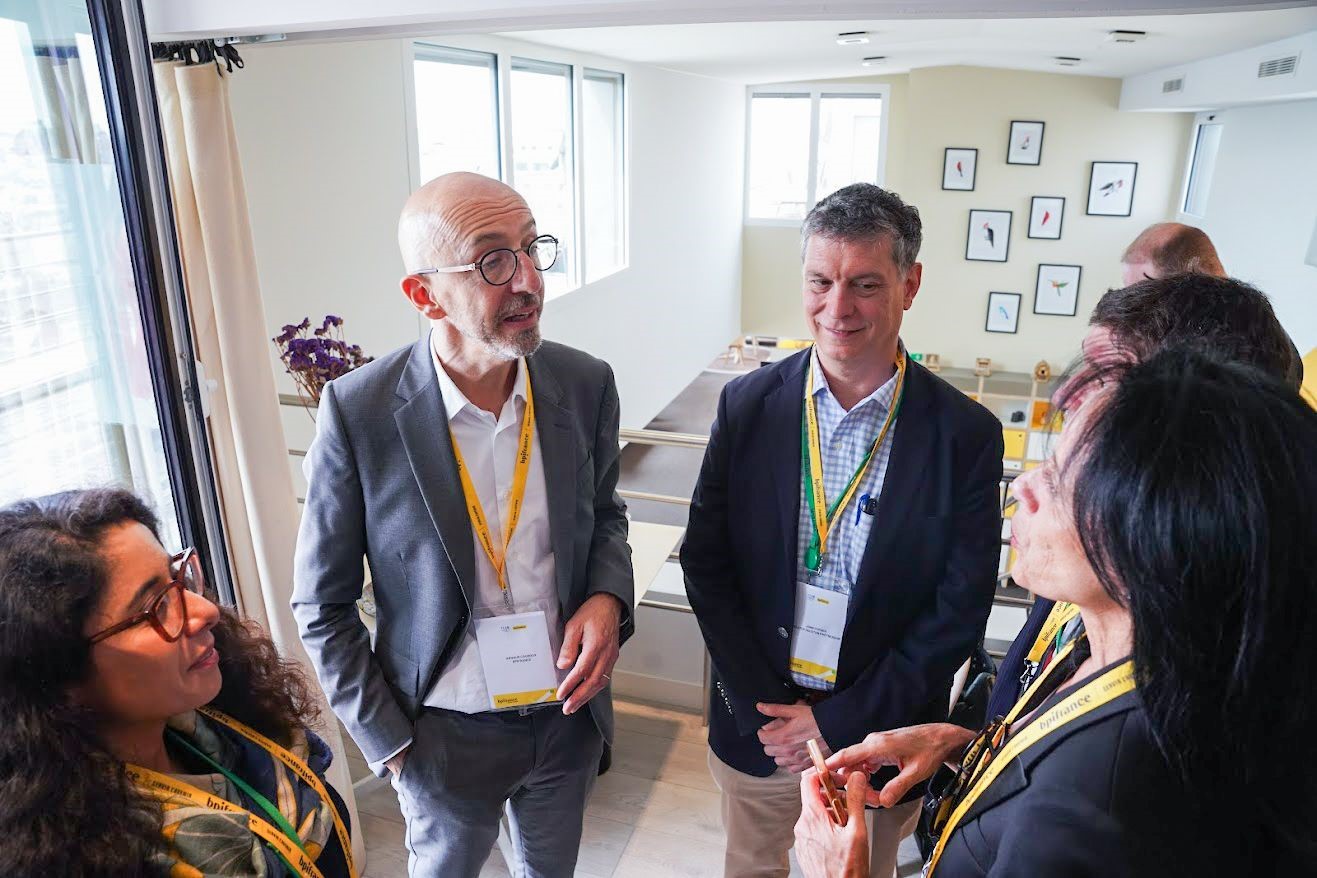Growth of Wind Energy Hot Topic at Conference in Houston
Published May 22, 2019 by Lou Ann Duvall
As the Energy Capital of the World, it is only fitting that the wind industry’s largest annual gathering takes place in Houston. As renewable energy companies scale their work, Houston is uniquely suited to help develop and grow their operations largely because of the area's deep, energy-centric talent pool built around engineering, project development and finance.
The Partnership had the opportunity to chat with the current CEO of the American Wind Energy Association, Tom Kiernan. Prior to joining AWEA, Kiernan was President of the National Parks Conservation Association for 15 years. Previous positions include Deputy Assistant Administrator of EPA’s Office of Air and Radiation where he assisted in leading the implementation of the 1990 Clean Air Act Amendments, President of the Audubon Society of New Hampshire.
AWEA Wind Power is entering its 45th year, how has the conference evolved over the years?
AWEA has been bringing the wind energy industry together since 1974. Over the years, the WINDPOWER Conference & Exhibition has evolved to meet our rapidly growing industry’s needs and become as efficient as possible for both attendees and exhibitors. We’ve diversified session topics and brought our five education stations, plus the ePoster gallery, onto the show floor for convenient learning opportunities.
We are very excited to be headed to Houston, the energy capital of the world, for WINDPOWER 2019. Texas leads the nation in wind capacity, wind-related jobs and investment. In fact, the Lone Star state has more installed wind capacity than the Oklahoma, Iowa and California combined, the states occupying slots two through four on America’s wind leader board. If Texas were a country, it would rank fifth in the world for wind power capacity with nearly 25,000 megawatts (MW) installed.
In addition, we were in Houston back in 2008 and since then they have invested in additional hotels, restaurants and nightlife around the convention center district which will make for an even better experience for attendees.
Why does AWEA feel it’s important to host such a significant event in Houston?
While Texas is known to be a big producer and consumer of energy, many find it surprising that the state leads all states in wind energy production by a large margin. With wind already supplying 16% of in-state electricity generation, there’s great potential for the state to become an even bigger player in clean energy. One of our panels will feature Texas energy leaders discussing what needs to happen for the state to reach its clean energy potential and reap the economic and environmental benefits of a cleaner grid.
AWEA’s Texas-based member companies will be well represented this year with Shell, BP Energy, EDP Renewables, E.ON, and Pattern Energy all having important roles in the program. In addition, this year’s event will have “on the road” learning opportunities throughout Houston that attendees can choose to add on. These local learning sessions include a boat tour of the Port of Houston, blade services safety & repair demonstrations at the WindCom facility, or a tour of the EDF trade floor.
As the wind industry continues to evolve and digitize, what are some of the biggest changes you have seen at AWEA over the years?
The wind industry has made tremendous strides to innovate and mature, driving costs down and making wind cost-competitive across the country. Since 2009, the cost of U.S. wind power has fallen by 69 percent. Wind is now the most affordable source of new electricity generation in many parts of the country. Technological advancements like longer blades and digital connectivity are making wind turbines more productive, while improved siting practices are helping developers identify the areas with the strongest wind resource. These improvements are helping the industry build smarter and more efficiently to the benefit of energy consumers.
Those changes can be felt throughout the WINDPOWER Conference & Exhibition as well. Exhibitors showcase drones, virtual reality simulators and digital O&M solutions. Sessions include topics on energy storage, offshore wind and electrification. As the industry evolves, so do the education sessions and technologies seen on the show floor.
What are the greatest opportunities for the wind industry right now?
Innovation and supply chain development allow the wind industry to access the strong, steadier winds, like those off America’s coasts. Recent analysis found that offshore wind will generate 18.6 gigawatts (GW) of clean energy off the U.S.’s Atlantic coast by 2030 with a $70 billion CAPEX. That is a huge opportunity for firms specializing in blades, logistics and offshore platforms and cabling – including some right here on the Gulf Coast. This new frontier for U.S. wind power will create thousands of new jobs and investment opportunities.
Appetite for land-based wind is also growing among American businesses, with many Fortune 500 brands choosing to purchase large amounts of wind energy through long-term contracts. In fact, 2018 was the strongest year on record for corporate procurement of wind. While offshore and land-based wind sectors continue to grow in the U.S., it will be critical to upgrade and expand America’s aging transmission line infrastructure to unlock even more low-cost clean energy and bring it to market.
What are the greatest challenges? How does AWEA help address those challenges?
One of wind’s greatest challenges is also one of the greatest opportunities. The U.S. grid was recently rated an unacceptable D+ by the American Society of Civil Engineers. Expanding and upgrading the country’s aging transmission lines will help connect consumers to reliable, abundant wind and solar energy and support a cleaner, stronger 21st-century U.S. economy. Transmission investments have been shown to return more than 2-4 times their initial investment cost, a no-regrets down payment for future economic growth. Lots of private capital is ready to move on transmission projects, but we need reforms to policies that govern planning and permitting to get these lines built.
What are some of the innovations you think we can expect to see over the next 50 years?
It is hard to say exactly what the next 50 years have in store, but wind power consistently beats projections and we plan to keep doing so. Wind power has made rapid improvements over the past decade, driving down costs and employing a record 114,000 hardworking Americans in the process. Harkening to WINDPOWER’s theme this year, Wind+, we expect to see creative hybrid projects that pair the strengths that wind, solar, storage, and other technologies bring to the table to deliver an affordable, reliable and clean energy product to consumers.
Why should the average consumer who isn’t in the industry pay attention to AWEA this year?
We’re really glad WINDPOWER is back in Houston this year. Texas leads the way when it comes to wind power, home to a quarter of all U.S. wind power capacity and more wind industry jobs than any other state. Low-cost wind power helps keep electricity bills low for Texas consumers. And some of Texas’ 25,000 wind jobs can be found right here in Houston, where several major companies that develop and operate wind farms or manufacture components have facilities. Many AWEA member companies and WINDPOWER attendees are diversified into other renewable energy technologies, as well as oil and gas. We invite and welcome members of the whole Houston energy community to join us at the WINDPOWER Conference, May 20-23, to learn what’s new and what’s next for the rapidly growing wind industry and the cleantech sector.
Visit the Greater Houston Partnership’s Energy Committee page for more on how the organization is working to maintain Houston’s position as the Energy Capital of the World.
 The Houston Report
The Houston Report



















